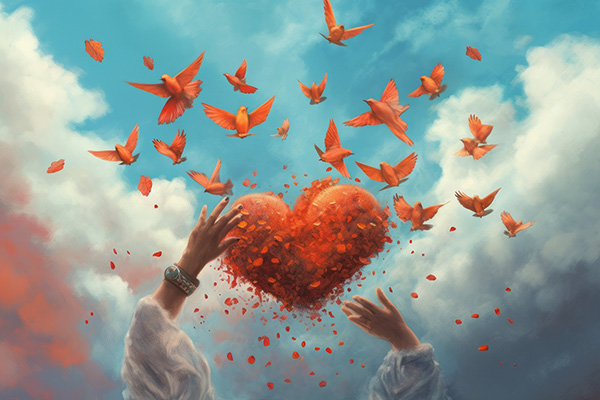psychic symbols
How To Do A Tea-Leaf Reading
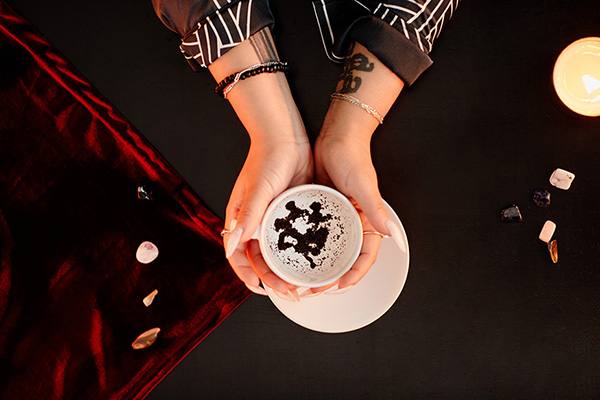 When I do a teacup reading, I let my mind to run free as I interpret the symbols in the tea leaves for the client. There are standard traditional guidelines as to what different shapes may symbolize, but I prefer to let my intuition do the talking.
When I do a teacup reading, I let my mind to run free as I interpret the symbols in the tea leaves for the client. There are standard traditional guidelines as to what different shapes may symbolize, but I prefer to let my intuition do the talking.
Interpretation of the tea leaves is subjective, and there is no one right way to do it. Different readers will interpret the same patterns differently.
However, there are some common symbols one will often find in the bottom of the cup include animals, human faces, and all kinds of everyday objects. Symbols grouped together can create a theme, and sometimes the tea leaves spell out letters of the alphabet or numbers.
Tea-leaf reading is also known as tasseography, tasseomancy or tassology. Tasseography is also done by reading wine sediments and coffee grounds. This divination practice possibly originated in China, where tea was first cultivated, and may have evolved from the Chinese traditions of divining the patterns left by the dregs of wine in a cup, as well as the patterns created by the smoke from incense sticks.
Tea itself was first introduced to Europe in the 17th century and thus tea-leaf reading spread to other parts of the world. Among the first Europeans to embrace the practice were the traveling Romani people, who sometimes offered is as a door-to-door service. Tea-leaf reading also became popular in Victorian times as a parlor game.
Like Tarot reading or scrying a crystal ball, tea-leaf reading is a divination method for accessing the universal consciousness via the subconscious mind. Slowing down the rational, analytical mind allows us to focus on our intuition to receive divine guidance.
The True Meaning Of Judgment
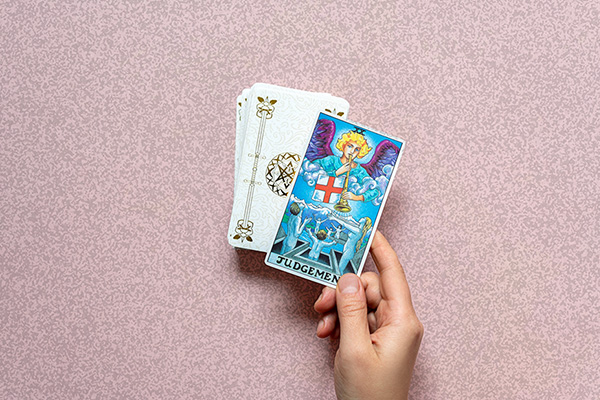 Judgment is card 20 in the Tarot’s Major Arcana. Arcana means “hidden things, mysteries,” from the Latin arcanum meaning “a secret, a mystery” and arcanus meaning “secret, hidden, private, concealed.” Arcana are therefore “pieces of mysterious knowledge or information.”
Judgment is card 20 in the Tarot’s Major Arcana. Arcana means “hidden things, mysteries,” from the Latin arcanum meaning “a secret, a mystery” and arcanus meaning “secret, hidden, private, concealed.” Arcana are therefore “pieces of mysterious knowledge or information.”
In a standard Tarot deck, there are 21 Major Arcana cards. They define The Fool’s journey (the first card) through life and all of the life lessons we encounter along the way. As one of the final stages in The Fool’s journey, the Judgment card represents having learned sufficient lessons to now awaken from the illusion and limited perceptions.
The most well-known tarot deck is the Rider–Waite. Pamela Coleman Smith, aka “Pixie,” was a British artist who illustrated the deck. She deserves much credit for the brilliant way she captured advanced spiritual concepts in the deck’s artwork.
The Rider–Waite Judgment card depicts three resurrected figures, a woman, man, and child, reaching up to an Archangel overhead blowing a trumpet as a wake-up call. The scene is based on Christian imagery representing the Resurrection and Last Judgment. The flag of St. George hangs from the trumpet, which references 1 Corinthians 15 in The Bible.
The Judgment card reminds us that no matter what our background may be, we can rise up and transcend any trauma or adversity in life, regardless how challenging the situation. We also have the power to see through the illusion of life and wake up to the truth.
Reawaken Your Psychic Ability
 Many of us are born with the ability to perceive the unseen, sense the future and communicate with spirit. Childhood conditioning and trauma, religious and cultural influences in how we were raised, and various circumstances and life experiences can suppress our psychic gifts, often because we were told it is silly, inapproriate, or even ‘evil.’
Many of us are born with the ability to perceive the unseen, sense the future and communicate with spirit. Childhood conditioning and trauma, religious and cultural influences in how we were raised, and various circumstances and life experiences can suppress our psychic gifts, often because we were told it is silly, inapproriate, or even ‘evil.’
If you can relate to this, then you need to know that your psychic talent is never lost or destroyed. You can reconnect with your natural gifts by engaging in various spiritual and metaphysical practices that will reawaken and develop your psychic abilities.
I started this process myself years ago by experimenting with various forms of meditation. Meditation teaches one to achieve altered states of consciousness, to become more aware of perceptions and energies that we otherwise do not notice in our normal waking state.
I also started keeping a ‘psychic journal.’ I wrote down my dreams every morning, as well as any unusual thoughts and feelings I had about a person or situation. Using these notes as reference, I would later check the relevanc and accuracy of my perceptions and premonitions.
Studying various divination methods also helped me a lot. For example, Astrology helped me to better understand the ancient metaphysical concept of “as above, so below,” and how it affects our daily lives. Astrology references universal consciousness and divine design, and the direct affect it has on us. It gave me greater insight into why people born under certain zodiac signs behave the way they do, and how each planet affects us, especially when it retrogrades, or moves into a new sign. It also explains why people get more emotional when the Moon is full, or why communication breaks down when Mercury is in retrograde.
Changing Palm Lines Reflect Your Spiritual Progress
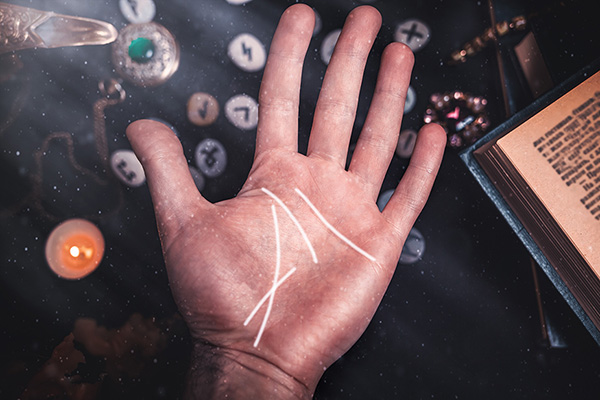 Some years ago, I had a palm reading with a lady who lives nearby. Palmistry is not one of my specialties, but I did find the experience interesting and learned much from what she told me.
Some years ago, I had a palm reading with a lady who lives nearby. Palmistry is not one of my specialties, but I did find the experience interesting and learned much from what she told me.
She focused on my line of fate, also known as the line of Saturn. It is a crease in the center of the palm that often intersects the head and heart lines and runs close to the life line.
In its formation she identified a future time in my life when I’d be traversing a lot of difficulty. This later proved to be true, but I have since managed to successfully overcome those challenges and my life is now so much better.
Interestingly, I recently discovered that my fate line has shifted since then. Instead of shooting straight up, as it did when this lady read for me, it now leans further to the right, towards my heart line.
Doing some further research on the matter, I discovered that our palm lines do shift for over time. I believe this may be the result of our personal growth and spiritual evolution.
This lesser-known phenomenon in palmistry is in alignment with most other forms of divination and psychic channeling. Instead of accepting a foregone, sometimes even grim fate in any reading or forecasting, we are constantly changing, growing, and evolving in mind, body and soul. In time, subtle changes in our palm lines should therefore increasingly reflect this.
I believe my Saturn line has meanwhile sloped towards my heart line because I now do the work I truly love, helping people daily with the guidance of spirit. Back then, when I received the palm reading, I was still doing psychic readings part-time, while working full-time in healthcare. That changed two years later, when I went into full-time spiritual work.
Inspire Your Journaling With The Runes
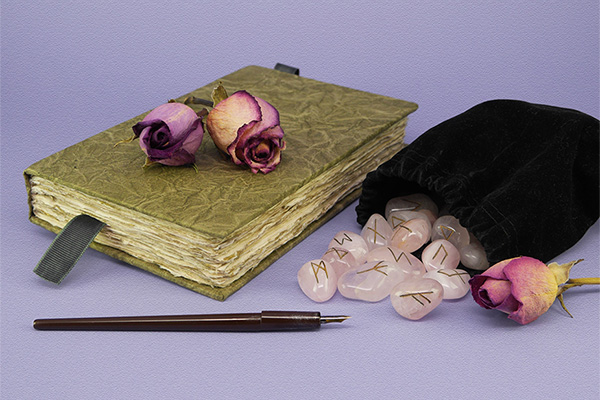 Journaling is a powerful practice for self-discovery and personal growth. It allows one to reflect on your thoughts and emotions, gain clarity, and connect with your inner wisdom. Sometimes finding the necessary inspiration for a journal entry can however be difficult. A wonderful way to enhance your journaling practice is by incorporating runes. The runes are an ancient Germanic alphabet used for writing, divination, and magic. Each rune features a unique symbol representing different aspects of life and the natural world.
Journaling is a powerful practice for self-discovery and personal growth. It allows one to reflect on your thoughts and emotions, gain clarity, and connect with your inner wisdom. Sometimes finding the necessary inspiration for a journal entry can however be difficult. A wonderful way to enhance your journaling practice is by incorporating runes. The runes are an ancient Germanic alphabet used for writing, divination, and magic. Each rune features a unique symbol representing different aspects of life and the natural world.
The use of runes as a divination tool dates back to the Viking Age (793–1066 CE) and has been practiced by many cultures throughout history. Today, runes are often used as a tool for self-discovery, personal growth, and spiritual practice.
Using the runes to inspire journaling is a simple and effective way to take your spiritual practice to the next level. Here are some steps to get you started.
1. Choose a set of runes that resonates with you. You can order a rune set online, purchase it at your local metaphysical shop, or even make your own. Each set should include 24 runes, plus one blank rune that represents the unknown or unexpected.
2. Set an intention for your rune journaling practice. Before you begin, relax, take a few deep breaths, and then set a clear intention for what you wish to gain from today’s journaling session. It might be clarity, insight, healing, or guidance on a specific issue.
